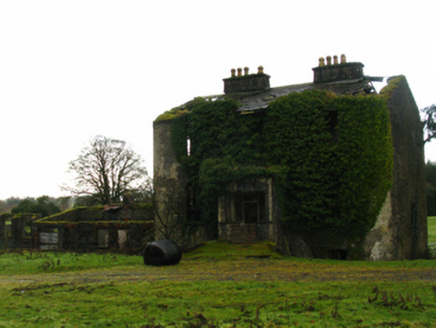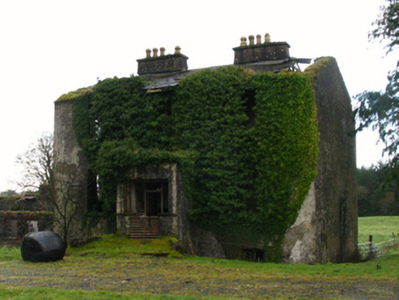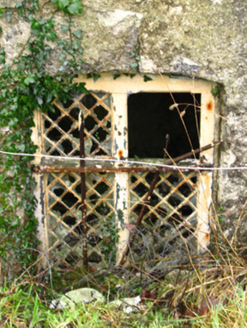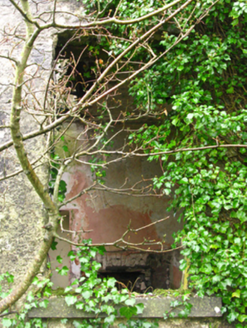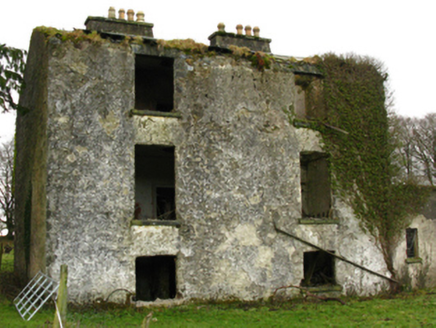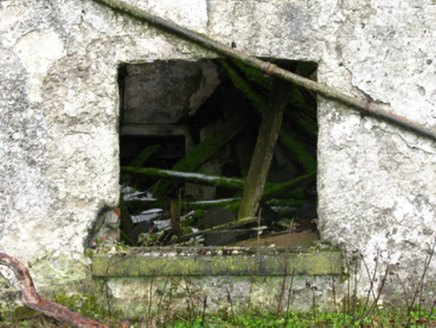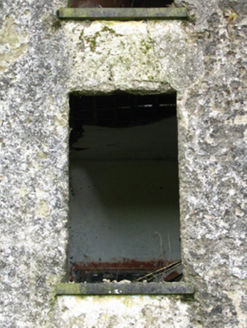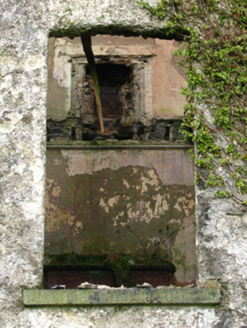Survey Data
Reg No
31311117
Rating
Regional
Categories of Special Interest
Architectural, Artistic, Historical, Social
Original Use
Rectory/glebe/vicarage/curate's house
Date
1820 - 1825
Coordinates
133989, 271241
Date Recorded
11/12/2010
Date Updated
--/--/--
Description
Detached three-bay two-storey over part raised basement Board of First Fruits Church of Ireland glebe house, built 1822, on a symmetrical plan centred on single-bay single-storey flat-roofed projecting porch to ground floor; two-bay full-height rear (east) elevation. Vacant, 1901. Occupied, 1911. Now disused. Pitched slate roof on collared timber construction with pressed or rolled lead ridge, paired rendered central chimney stacks on axis with ridge having cut-limestone capping supporting terracotta or yellow terracotta octagonal or tapered pots, moss-covered coping to gables, and no rainwater goods surviving on timber eaves boards retaining some cast-ion octagonal hoppers and downpipes. Creeper- or ivy-covered lime rendered or roughcast walls. Segmental-headed central door opening into glebe house with no fittings surviving. Square-headed window openings with drag edged dragged cut-limestone sills, and concealed dressings framing remains of two-over-two (ground floor) or six-over-six (first floor) timber sash windows with timber casement windows (basement) having cast-iron lattice glazing bars. Interior including (ground floor): central hall retaining carved timber surrounds to door openings framing remains of timber panelled doors, remains of run moulded plasterwork cornice to ceiling, staircase on a dog leg plan with balustrade now missing, and remains of carved timber surrounds to door openings to landing framing remains of timber panelled doors; and carved timber surrounds to door openings to remainder with fittings now missing. Set in unkempt grounds.
Appraisal
A glebe house erected with financial support from the Board of First Fruits (fl. 1711-1833) representing an integra component of the early nineteenth-century built heritage of south County Mayo with the architectural value of the composition suggested by such attributes as the deliberate alignment maximising on scenic vistas overlooking the meandering Robe River; the compact rectilinear plan form centred on a restrained doorcase, albeit only largely obliterated by an unsightly porch; the definition of the principal floor as a slightly elevated "piano nobile"; and the diminishing in scale of the openings on each floor producing a graduated visual impression. A prolonged period of unoccupancy notwithstanding, the elementary form and massing survive intact together with remnants of the original fabric, both to the exterior and to the interior where sleek plasterwork refinements highlight the now-modest artistic potential of the composition. Furthermore, adjacent outbuildings (extant 1893) continue to contribute positively to the group and setting values of a self-contained ensemble having historic connections with the Crossboyne parish Church of Ireland clergy including Reverend William Crofton (Lewis 1837 I, 437); and the des Graz family (NA 1911) including Chalres Louis Maurice des Graz JP DL (1856-1935) and Mary Christine des Graz (née Guthrie Browne) (1862-1948).
